Tribe Euphorbieae Scientific name Euphorbia myrsinites Rank Species | Subfamily Euphorbioideae Subtribe Euphorbiinae Higher classification Spurges | |
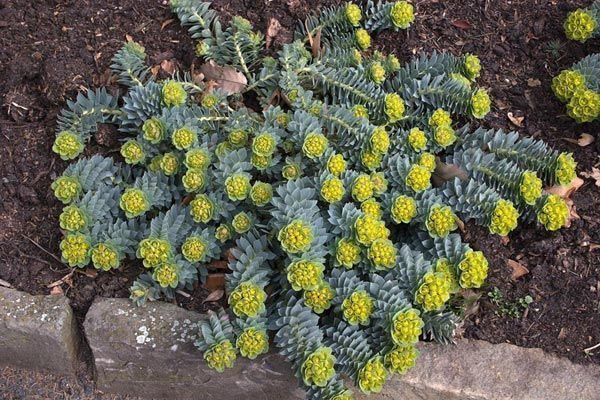 | ||
Similar Spurges, Euphorbia epithymoides, Euphorbia characias, Euphorbia amygdaloides, Euphorbia cyparissias | ||
Euphorbia myrsinites
Euphorbia myrsinites, the myrtle spurge, blue spurge, or broad-leaved glaucous-spurge, is a succulent species of the spurge (family Euphorbiaceae).
Contents
- Euphorbia myrsinites
- Distribution
- Etymology
- Description
- Toxicity
- Cultivation
- Noxious weed
- Control
- References
Distribution

The plant is native to southeastern Europe and Asia Minor, from Italy east through the Balkans to the Crimea and Turkey.
Etymology
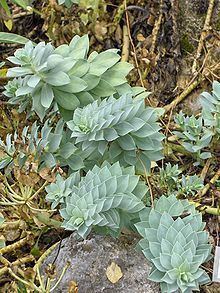
The specific epithet myrsinites is derived from the Greek word μυρσινίτης (myrsinites), which was used in Dioscorides's De Materia Medica to describe its similarity to μυρσίνη (myrsine), aka myrtle (Myrtus communis). It often mistakenly refers to another genus Myrsine, whose name is also derived from the Greek name of myrtle.
Description
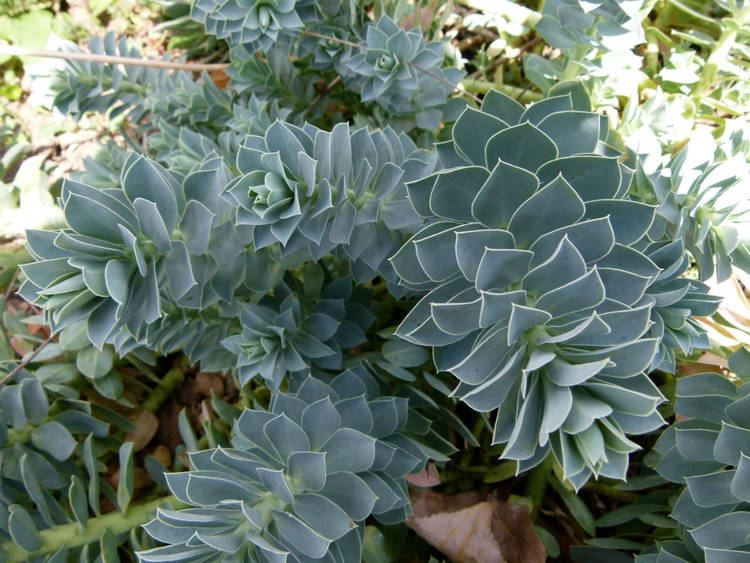
Myrtle spurge is an evergreen perennial. It has sprawling stems growing to 20-40 cm long. The leaves are spirally arranged, fleshy, pale glaucous bluish-green, 1-2 cm long. The flowers are inconspicuous, but surrounded by bright sulphur-yellow bracts (tinged red in the cultivar 'Washfield'); they are produced during the spring.
Plants spread primarily by seed and are capable of projecting seed up to 15 feet.
Toxicity
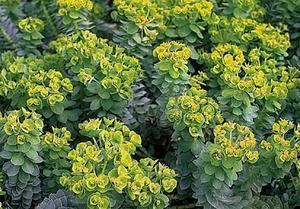
The plant's milky sap can cause significant skin and eye irritation in humans. Goggles, gloves and protective gear is often used when removing plants. Children are more susceptible than adults to symptoms from myrtle spurge, suggesting play areas not in proximity to the species. Pets can have similar reactions to myrtle spurge sap exposure.
The species can be strongly allelopathic, preventing other plants from growing nearby.
Cultivation
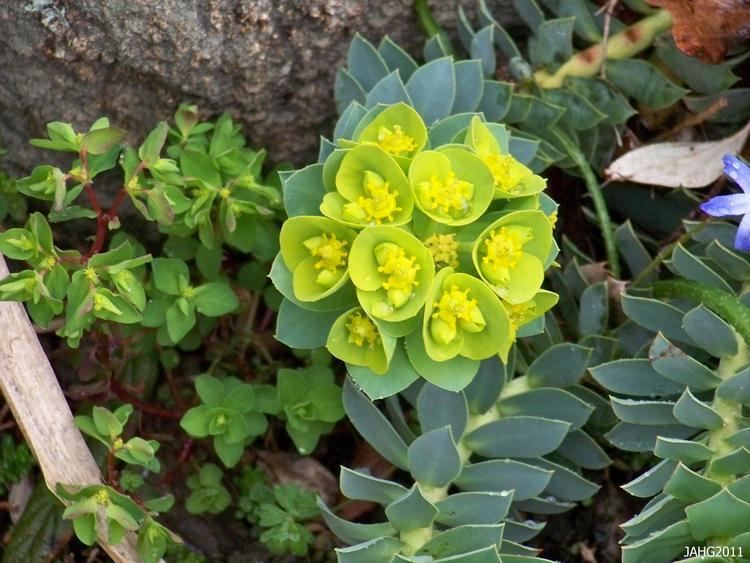
Euphorbia myrsinites is cultivated as an ornamental plant for its distinctive silver-gray foliage, and is used in garden borders, 'modernist' mass plantings, and as a potted plants. It is planted in drought tolerant gardens in California and other dry climates.
In the United Kingdom, the cultivated plant has gained the Royal Horticultural Society's Award of Garden Merit.
Noxious weed
Euphorbia myrsinites is identified as a noxious weed and/or invasive species in some regions. Its cultivation is illegal in the U.S. state of Colorado, where it is classified myrtle spurge as a Class A noxious weed, and landowners are legally required to eradicate it.
Myrtle spurge is also classified as a noxious weed in the U.S. state of Oregon, subject to quarantine.
It was listed as a noxious weed in Salt Lake County, Utah in 2007, and since has been illegal for sale within the county. Salt Lake County landowners and land managers are legally responsible to contain, control, or eradicate the species on their property. The Utah Native Plant Society has also formally recommended it be listed as a Utah state noxious weed.
